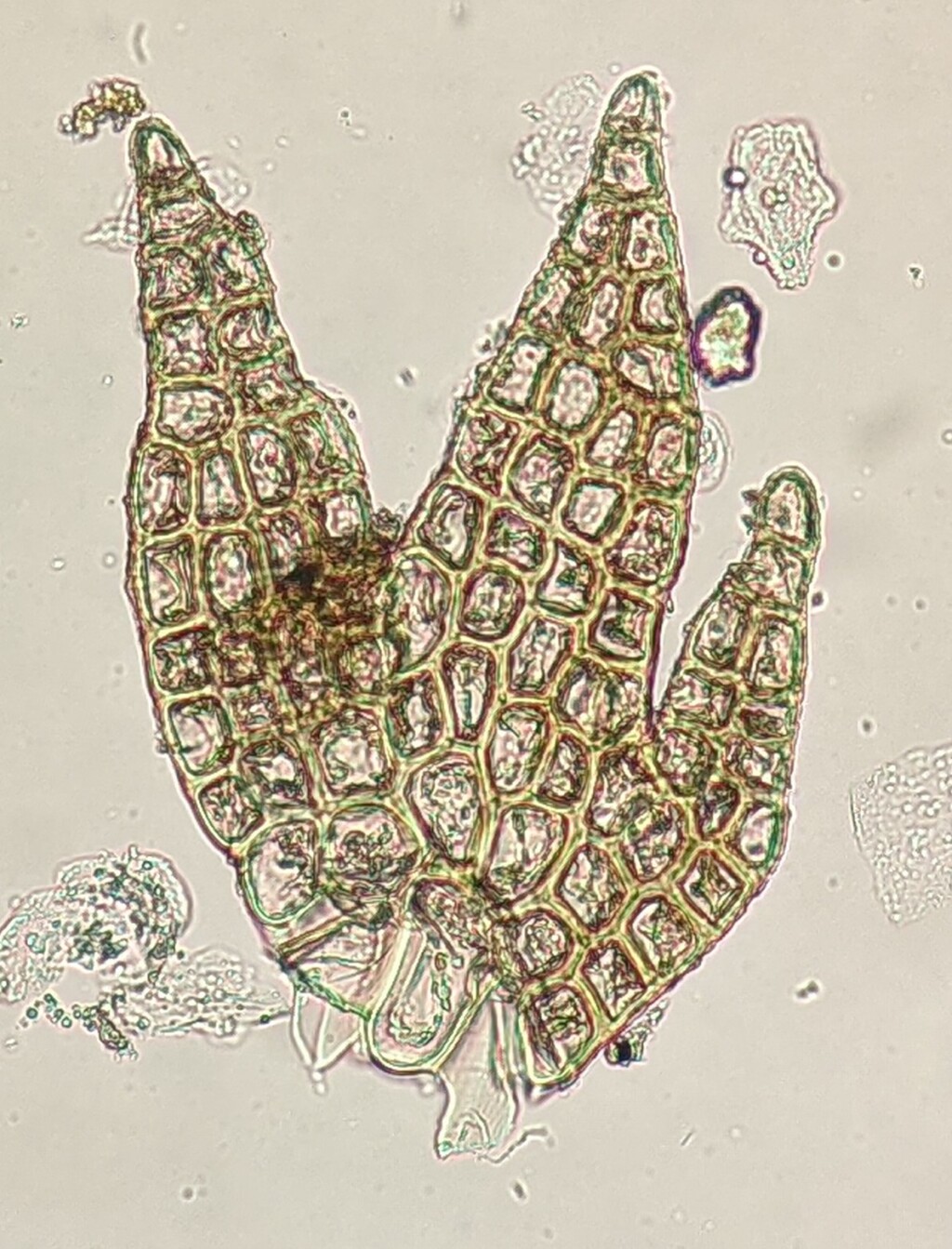Pseudocephalozia
Terrestrial, dioecious. Specialised asexual propagules absent. Stems differentiated into creeping leafless axes and erect irregularly branched leafy axes, with two ranks of lateral leaves and a single rank of underleaves; branches emerging from stems mostly from near unmodified lateral leaves and underleaves and with a collar of tissue at base, occasionally emerging abaxial or adaxial to a lateral leaf with fewer lobes and without a collar of tissue at base. Lateral leaves cuneate to obtrapezoidal in outline, usually 3–4-lobed, occasionally 5–6-lobed, transverse to succubous, patent to almost erect, imbricate to distant, entire, collectively light green, unistratose throughout or (not in Victoria) 2–5-stratose toward central base; lobes mostly equal, triangular, acute. Underleaves much smaller than lateral leaves, cuneate to obtrapezoidal in outline, 2–4-lobed, distant; lobes triangular, acute to acuminate (not in Victoria), often ending in slime papilla. Leaf cells oblong to polygonal, thin-walled, without trigones, with 1–6 large, ellipsoid and granular-botryoidal oil bodies. Rhizoids fascicled and abaxial on creeping stems. Androecia on leading stems, with around 3 pairs of leaf-like bracts, each with 1–2 antheridia, occasionally bracteoles also with antheridia. Sporophyte at apex of short branch arising from lateral of abaxial side of stem. Perianth terete at base, becoming trigonous or obscurely 5-plicate toward mouth; mouth crenulate to laciniate. Capsule 2–4-stratose; elaters 2-spiral. Spores spherical, vermiculate-granulate.
Six species, three in southern South America, with one of those extending along Andes to Venezuala and then disjunct to Costa Rica, one species in New Guinea and two species in New Zealand, one of which extends to south-eastern Australia (Schuster & Engel 1974).
Schuster, R.M. & Engel, J.J. (1974). A monograph of the genus Pseudocephalozia (Hepaticae). Journal of the Hattori Botanical Laboratory 38: 665–701.
 Spinning
Spinning